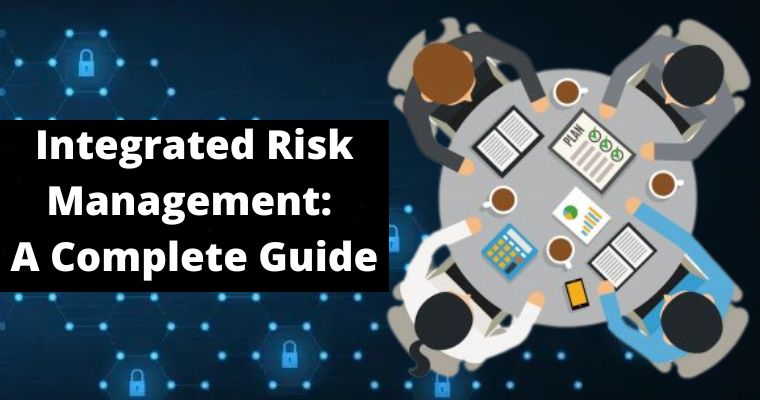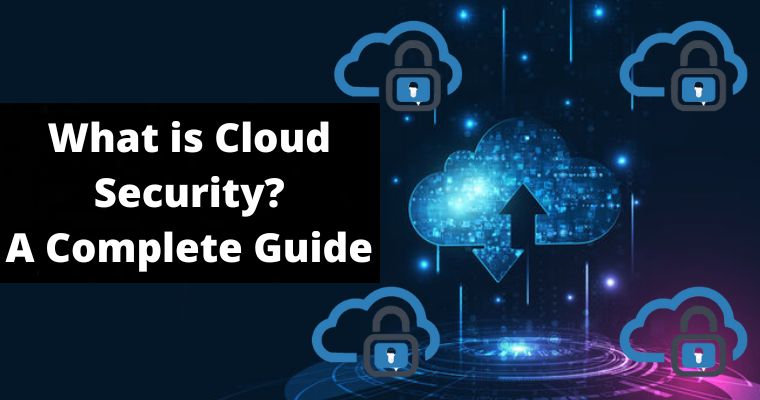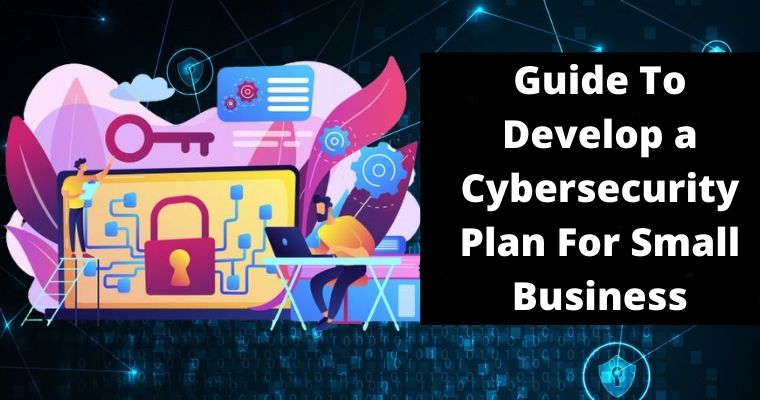Table of Contents
What is Integrated Risk Management?
Integrated Risk Management (IRM) is a set of proactive, company-wide activities that contribute to an organization’s security, risk tolerance profile, and strategic decisions.
IRM focuses on evaluating risks in the context of company strategy instead of compliance-based risk management methodologies.
An Integrated risk management programme should be collaborative and include leaders from both the IT and business sides.
Gartner initially invented the term “integrated risk management” in 2017 in response to a more complicated risk landscape caused by increased digital processes, globalization, and a greater reliance on third parties.
According to Gartner, an effective integrated risk management framework should contain:
- A clear strategy.
- Detailed risk assessment.
- A risk response plan.
- Communication and reporting.
- Risk monitoring.
- The installation of a software-based IRM solution (IRMS).
Integrated Risk Management Framework
The Integrated Risk Management framework is a strategic combination of risk management strategies used to manage an organization’s present and future hazards.
It provides the accountability and reporting mechanisms to support the risk management process and the precise set of functional activities and processes utilized to manage risks.
What are the Five Processes in the Risk Management Framework?
The risk management process serves as a structure for completing the tasks that must be completed. There are five key steps to take to manage risk.
The process entails these steps. It starts with identifying risks, then analyzing them, prioritizing them, devising a solution, and ultimately monitoring them.
Now let’s look at how these steps are carried out in a more digital setting.
Step 1: Identify the risk
The first step is to determine which risks the company faces in its operating environment. Legal risk, environmental risk, market risk, regulatory risk, and other sorts of risk exist. It is critical to recognize a growing number of these risk factors.
Step 2: Analyze Risk
Risk must be examined once it has been recognized. The risk’s scope should be determined. Understanding the link between risk and other internal factors is also crucial.
It is vital to see how much risk affects business to determine the level and severity. Some dangers can bring the entire organization to a halt and hazards that will be a minor annoyance to assess.
Step 3: Evaluate Risk
Risks must be prioritized and ranked. Depending on the severity of the risk, most risk management solutions provide a variety of risk categories. A low-risk situation may cause some pain.
The importance of risk ranking allows the organization to gain a holistic view of its risk. Many low-level dangers may be present in a business, but they may not necessitate the participation of upper management.
On the other side, only one of the highest-rated threats is sufficient to justify immediate action.
Step 4: Treat Risk
All risks must be lessened to the maximum possible extent. accomplished by collaborating with specialists in the field that is in jeopardy.
This forces each stakeholder to make contact and then convene a meeting so that everyone can talk about and address issues.
Step 5: Monitor and review risk
Some dangers will always exist; some risks cannot be eliminated. Market risk and environmental risk are two examples of risks that must be monitored at all times. All parties involved should keep a watchful eye on all potential dangers.
Your company’s continuation can be ensured by keeping an eye on risk management and compliance.
It refers to an organization’s approach to these three practices: governance, risk management, and compliance. Its goal is to ensure that an organization consistently achieves its goals, manages uncertainty, and behaves with integrity.
Integrated Risk Management vs GRC
Integrated risk management (IRM) is a set of practices and processes that improve decision-making and performance by providing an integrated view of how well an organization manages its unique set of risks.
It is supported by a risk-aware culture and enabling technologies. Its main goal is to keep risks under control.
A good enterprise risk management programme in business looks at what happened in the past
- With the help of audit and
- Business line self-assessments)
Sees what’s happening now
- By reviewing current activities,
- capabilities and limitations,
- Usually expressed through financials and monitored through various metrics,
- Understanding compliance or regulatory mandates,
- Stakeholders’ interests,
- Existing resources, such as staff, vendor, supplier, and technological resources),
- Existing resources, such as staff, vendor, supplier, and (both catastrophic failures and missed opportunities).
The first step is to understand an organization’s holistic and identify important drivers and contributors to executive management’s strategic goals.
Depending on the objectives and the organization, metrics can be quantitative or qualitative.
Executive management can then make better-informed decisions about
- Managing risk (through mitigation, avoidance, etc.),
- More importantly, how to map and achieve the organization’s desired future through a continuous process Detection, quantification, supervision, and risk assessment reporting are all steps.
Enterprise Risk Management Process
ERM is only a component of senior management’s strong, regular communication in small businesses.
Unique tools, documentation, efficient, consistent, and well-communicated risk management processes and practices become more important as companies grow and become more broad and complex.
An effective ERM team can prioritize and highlight information critical to decision-makers – similar to a highly efficient, highly customized search and feed for a CEO or division head.
ERM principles differ depending on the sector, consulting firm sponsoring the event, and the host country. COSO and ANZ standards were the most common; however, ISO 3100 has gained support.
The RMA (risk management association – banking) and several insurance groups have perspectives. Quantitative finance principles, of course, have a significant impact on enterprise risk management.
Organizations like GARP (Global Association of Risk Professionals) and PRMIA (Professional Risk Managers International Association) focus on it, primarily market and credit risk, with some operational risk thrown in for good measure (behavioural and operational risks have always been notoriously difficult to quantify).
The OCEG focuses on more qualitative, reputational enterprise risk management, such as board governance, ethics, organizational hierarchies, and policy formulation inside a corporation.
List of Integrated Risk Management Certificates
- Certification RIMS-CRMP
All risk management professionals can earn the Certified Risk Management Professional (CRMP) designation from the Risk and Insurance Management Society (RIMS).
Including a RIMS-CRMP on your CV will assist hiring risk managers in rapidly recognizing your professional proficiency, risk management education, and vast experience, increasing your chances of landing a job.
The American National Standards Institute (ANSI) has accredited the RIMS-CRMP certification.
This implies it follows worldwide risk management guidelines and adheres to a strict code of ethics, including a commitment to legal compliance, professional conduct, and proper confidentiality.
The certification exam can be taken online or in-person by aspiring RIMS-CRMP professionals. Consider examining your educational and experience background to verify you meet one of the following qualifications before taking a RIMS-CRMP certification exam:
A bachelor’s degree in risk management and at least one year of full-time experience, including internships, are required.
- A bachelor’s degree in risk management that is nearly done
- A bachelor’s degree is required, and three years of full-time experience.
- Risk management experience spanning seven years
- Five years of full-time experience and an Associate in Risk Management (ARM)
Once you’ve earned your RIMS-CRMP certification, you can continue your risk management education to keep your certification current.
- CRM certification
The Certified Risk Manager (CRM) certification is offered by the National Alliance for Insurance Education and Research to professionals in various professions, including risk management, insurance, finance, and law.
As a CRM, you may enhance your professional reputation by demonstrating your practical experience in recognizing, analyzing, and managing risk in your chosen industry.
You can take a series of certification courses online or in person to improve your understanding of risk management tactics. These courses include the following:
- Risk assessment
- Risk management
- Risk capitalization
- Risk management is a skill that can be learned.
- Risk management principles
Candidates earn an internationally recognized CRM certification upon completing the programme and must continue to pursue long-term professional development to maintain their accreditation.
- PMI-RMP
The Project Management Institute (PMI) offers the Risk Management Professional certificate (RMP) for senior risk management professionals and project managers who want to advance their careers.
A PMI-RMP credential demonstrates your ability to classify, evaluate, and minimize unnecessary risks, as well as identify growth potential.
This could assist your company’s reputation and give clients, stakeholders, employers, and coworkers confidence in your level of competence.
If you’re thinking about taking the PIM RMP test to get your certification, look over the application requirements to help you prepare. The following are the experience-based requirements:
- A secondary degree, such as a high school diploma, is secondary education.
- You’ve had 36 months of project risk management experience in the last five years.
- 40 hours of project risk management training
Another set of requirements focuses on education, such as:
- A bachelor’s degree is required.
- Project risk management experience of atleat five years.
- 30 hours of project risk management training
Risk managers must pursue professional development courses to maintain their certification after passing the exam and receiving a PMI-RMP credential.
- Certificate of ERM
The Treadway Commission’s Committee of Sponsoring Organizations (COSO) offers an Enterprise Risk Management (ERM) credential. This certification may be of interest to individuals who:
Risk managers, for example, are in charge of risk management for an organization.
Consultants that provide enterprise risk management guidance
Members of the board of directors are in charge of overseeing enterprise risk management.
Candidates must complete a self-paced course, an in-person workshop, and an online exam to get an ERM certification.
- CERA
The Society of Actuaries offers the Chartered Enterprise Risk Analyst (CERA) credential to aspiring financial risk managers (SOA).
A CERA certification can demonstrate your competence to accurately advise clients about risks and support enterprises by building overall risk management protocols.
Candidates for the CERA programme take a series of courses over one to four years in disciplines such as:
- The basics of risk management
- Aptitude in both qualitative and quantitative terms
- Enterprise risk management is both practical and theoretical.
- Strategies for actuarial risk analysis
It’s a good idea to think about your background while studying for the CERA exam.
While there are no specific educational requirements for taking the exam, most successful candidates have a bachelor’s degree in finance, economics, accounting, business, or mathematics.
If you have a bachelor’s degree in a discipline other than accounting, you can prepare by taking a mock CERA exam, studying difficult topics, and furthering your education.
- FRM
The Global Association of Risk Professionals offers a Financial Risk Management (FRM) certification to aspiring financial risk specialists (GARP).
As an FRM expert, you can demonstrate to potential employers that you have considerable experience assessing and managing market difficulties such as liquidity and credit risks and financial risks unrelated to the market, such as internal financial management.
FRM-certified individuals frequently seek senior and executive financial jobs, depending on employer criteria and industry experience, such as:
- Manager of Finance
- Finance director Finance controller Vice president of finance
- Officer in charge of finances
- Executive Vice President
- PRM
For executive professionals, the Professional Risk Manager (PRM) accreditation is offered by the Professional Risk Managers International Association (PRMIA). A PRM certification can highlight your graduate-level understanding of business and finance on your CV.
Candidates who obtain a PRM certification are typically looking for work as a chief risk officer or financial risk manager for a corporation or other major organization.
Candidates must normally meet the following membership, educational, and experience requirements to be qualified for the PRM examination:
- Membership in a professional association, such as PRMIA or RIM, is required.
- A master’s degree in finance, such as a Master of Business Administration or a Master of Science in Finance, is required.
- A bachelor’s degree and two years of full-time finance industry experience are required.
- Four years of full-time job experience in any business, including financial services or risk management.
List of IRM tools
By identifying and creating measurements, parameterizing, prioritizing, developing actions, and tracking risk, risk management tools enable planners to address uncertainty openly.
It may be impossible to keep these activities without tools and procedures, documentation, and information systems.
The Capital asset pricing model (CAP-M) and Probabilistic risk assessment (PRA), both of which are distinguished by their approach, are the mainstays of project risk management.
These are categorized based on the accuracy and quality of data necessary for their calculations. Market-level tools make risk judgments between securities by relying on market dynamics.
Project constraints are used by system-level tools to make risk judgments amongst projects. Component-level methods use likelihood and impact functions of specific risks to choose between resource allocations.
Levels of the Market (CAP-M)
Given an asset’s non-diversifiable risk, CAP-M employs market or financial information and assumptions to establish the appropriate needed rate of return.
Component-Scale (PRA)
These PRA-based tools let planners explicitly address uncertainty by detecting and creating metrics, parameterizing, prioritizing, developing actions, and tracking risk from components, tasks, or prices.
PRA, also known as Likelihood-Consequence Analysis or Chance-Impact Analysis, is based on single-point assessments of a specific consequence’s probability of occurrence, starting event frequency, and recovery success (e.g., human intervention) (e.g., cost or schedule delay).
Tools and practices used in PRA that are notable
A way of controlling risk and uncertainties that affect project schedules is known as event chain methodology.
The RIMS Risk Maturity Model (RMM)
In 2006, the RIMS Risk Maturity Model (RMM) was released for enterprise risk management.
The RMM is a content and technical framework that outlines long-term and effective corporate risk management needs.
The RMM model has twenty-five competency drivers for seven criteria that determine the value and usability of ERM in an organization. The seven traits include:
- An ERM-based strategy.
- ERM process management.
- Risk appetite management.
- Root causes discipline.
- Risk discovery.
- Performance management.
- Corporate resiliency and sustainability.
The Risk and Insurance Management Society published the model created by Steven Minsky, CEO of LogicManager, in partnership with the RIMS ERM Committee.
The Risk Maturity Model is based on the Capability Maturity Model, developed in the 1980s by Carnegie Mellon University’s Software Engineering Institute (SEI).
Risk Radar Enterprise (RRE) is a web-based solution for enterprise-wide risk management at the programme and project level.
Within a single flexible and scalable business architecture, RRE offers effective management and communication of project Cost, Schedule, Technical, and Performance risk in one or many projects.
Conclusion
Integrated risk management (IRM) is a more realistic approach to risk management. It uses technology to identify and track threats and the activities taken to mitigate those risks, and it provides senior executives with improved visibility into which hazards.
They will be able to make more educated decisions about responding if they know which threats are the most serious.
Integrating risk management efforts into the rest of your organization can provide you with better data for decision-making, allowing you to fulfill your business objectives more.



